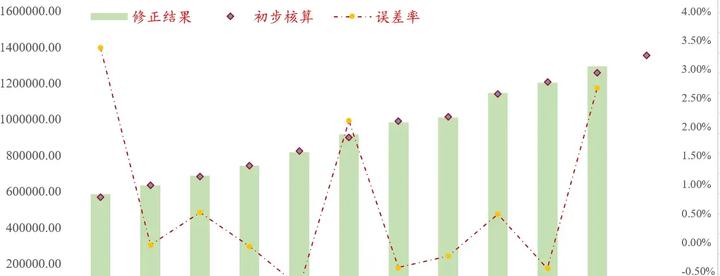China's 2023 GDP Revision: A Statistical Evolution
China’s National Bureau of Statistics revised its 2023 GDP estimate upward by 3.37 trillion yuan (2.7%), reflecting methodological changes in housing services calculation and comprehensive economic census data.

China’s recent GDP revision for 2023 reveals important shifts in how the world’s second-largest economy measures its economic output. The National Bureau of Statistics (NBS) announced an upward revision of 3.37 trillion yuan, bringing the total GDP to 129.4 trillion yuan, representing a 2.7% increase from initial calculations.
This revision stems from China’s fifth national economic census, a comprehensive survey conducted every five years. The census provides a more detailed and accurate picture of economic activity compared to regular annual statistics, particularly in capturing data from smaller businesses and the service sector.
A significant methodological change in this revision involves the calculation of housing services. The NBS implemented reforms in measuring urban residents' self-owned housing services, shifting from a cost-based approach to a market rent-based method. This aligns with international practices and better reflects the actual economic value of housing services in China’s increasingly urbanized economy.
The sectoral breakdown shows interesting patterns. The secondary industry (manufacturing and construction) saw a downward adjustment of 67 billion yuan, while the tertiary industry (services) increased by 404 billion yuan. This reflects China’s ongoing economic transformation toward a more service-oriented economy.
The census data also reveals dynamic changes in China’s business landscape. By the end of 2023, China had 33.27 million legal entities engaged in secondary and tertiary industries, a 52.7% increase from 2018. The wholesale and retail sector leads with 10.197 million entities, followed by leasing and business services with 4.609 million.
Employment patterns show significant structural changes. The tertiary industry employed 264.689 million people, marking a 25.6% increase from 2018, while secondary industry employment decreased by 4.8% to 164.295 million. This shift underscores China’s economic transformation from manufacturing toward services.
The digital economy has emerged as a crucial growth driver. The core digital economy encompassed 2.916 million legal entities employing 36.159 million people, generating 4.84 trillion yuan in revenue. This demonstrates China’s progress in technological advancement and economic modernization.
This statistical revision, while technical in nature, provides valuable insights into China’s economic transformation. It shows a maturing economy with more sophisticated measurement methods, better capturing the value of services and digital activities that increasingly drive growth in modern China.